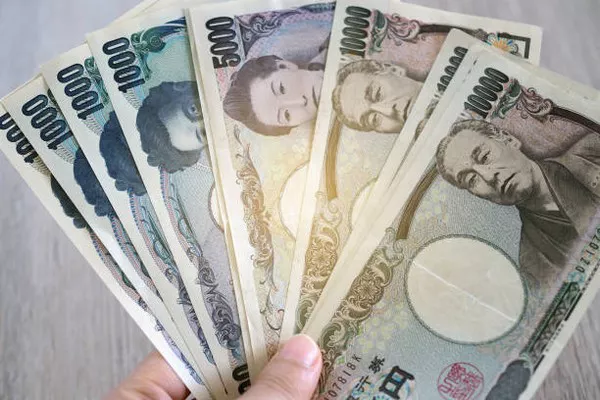Japan, a nation often lauded for its technological prowess and economic resilience, has found itself grappling with a persistent issue in recent years: recession. Despite being a leading global economy, Japan has faced significant economic challenges, leading to periods of economic contraction. This article delves into the multifaceted causes behind Japan’s recession, its implications for the country and the broader global economy, and potential strategies to navigate these turbulent waters.
Historical Context: Japan’s Economic Landscape
The Rise of Japan’s Economic Power
In the latter half of the 20th century, Japan experienced an economic miracle, transforming itself from the ashes of World War II into an economic powerhouse. Through strategic government intervention, investment in technology and infrastructure, and a strong work ethic, Japan became the world’s second-largest economy by the late 20th century.
The Bubble Economy and Its Burst
However, Japan’s economic ascent was not without pitfalls. In the late 1980s, Japan experienced an asset price bubble, particularly in the real estate and stock markets. This bubble burst in the early 1990s, leading to a prolonged period of economic stagnation known as the “Lost Decade.” Since then, Japan has grappled with deflationary pressures, an aging population, and tepid economic growth.
Causes of Japan’s Recession
Demographic Challenges
One of the primary factors contributing to Japan’s recession is its aging population. Japan has one of the oldest populations globally, with a declining birth rate and increasing life expectancy. This demographic trend has significant economic implications, including a shrinking workforce, reduced consumer spending, and strain on social welfare systems.
Deflationary Pressures
Japan has struggled with deflation, or a sustained decrease in the general price level of goods and services. While deflation may seem beneficial for consumers, as it increases purchasing power, it can have detrimental effects on the economy. Deflation discourages spending as consumers anticipate lower prices in the future, leading to decreased demand, stagnant wages, and reluctance by businesses to invest.
Structural Challenges
Japan’s economy also faces structural challenges, including inefficiencies in various sectors, bureaucratic hurdles, and rigid labor markets. These structural impediments hinder productivity growth and innovation, constraining Japan’s ability to sustain robust economic expansion.
Global Economic Headwinds
Furthermore, Japan is not immune to global economic trends and external shocks. Factors such as trade tensions, geopolitical instability, and the COVID-19 pandemic have weighed on Japan’s export-oriented economy, dampening growth prospects and exacerbating recessionary pressures.
Implications of Japan’s Recession
Domestic Ramifications
The repercussions of Japan’s recession extend beyond economic indicators. High levels of unemployment, particularly among the youth, can lead to social unrest and political instability. Moreover, a stagnant economy may exacerbate income inequality and hinder social mobility, further eroding public trust in institutions.
Global Economic Impact
As the third-largest economy in the world, Japan’s recession reverberates across the global economy. Reduced consumer demand in Japan can dampen export-oriented economies reliant on Japanese consumption. Moreover, Japan’s recession contributes to a broader narrative of global economic uncertainty, affecting investor sentiment and market stability.
Policy Dilemmas
Japan’s policymakers face a delicate balancing act in navigating the country’s recession. Monetary policy tools, such as quantitative easing and negative interest rates, have been employed to stimulate economic activity and combat deflation. However, the effectiveness of these measures is waning, raising questions about the sustainability of Japan’s monetary policy framework.
Navigating Japan’s Recession: Strategies for Recovery
Structural Reforms
Addressing Japan’s structural challenges requires bold reforms aimed at enhancing productivity, promoting innovation, and fostering a more dynamic economy. This may involve deregulation, streamlining bureaucracy, and fostering entrepreneurship to unleash Japan’s latent economic potential.
Investment in Human Capital
Investing in human capital is crucial for Japan’s long-term economic prosperity. This includes initiatives to enhance education and skills training, promote workforce participation among women and older individuals, and attract foreign talent to mitigate labor shortages.
Stimulating Domestic Demand
To counteract deflationary pressures, Japan must prioritize stimulating domestic demand through targeted fiscal measures and income support programs. Investing in social infrastructure, such as healthcare and childcare, can also alleviate the burden on households and encourage consumer spending.
Enhancing Global Economic Cooperation
Given Japan’s interconnectedness with the global economy, enhancing international cooperation is paramount. Japan can leverage its diplomatic and economic influence to advocate for free trade, address global imbalances, and foster a conducive environment for sustainable economic growth.
Conclusion
Japan’s recession is a complex interplay of demographic, structural, and external factors that pose significant challenges for policymakers and citizens alike. Addressing these challenges requires a comprehensive approach encompassing structural reforms, investment in human capital, and concerted efforts to stimulate domestic demand. Moreover, fostering greater global economic cooperation is essential in navigating the uncertain terrain of the post-recessionary world. By embracing these strategies, Japan can chart a course towards economic renewal and reaffirm its position as a leading global economic powerhouse.


